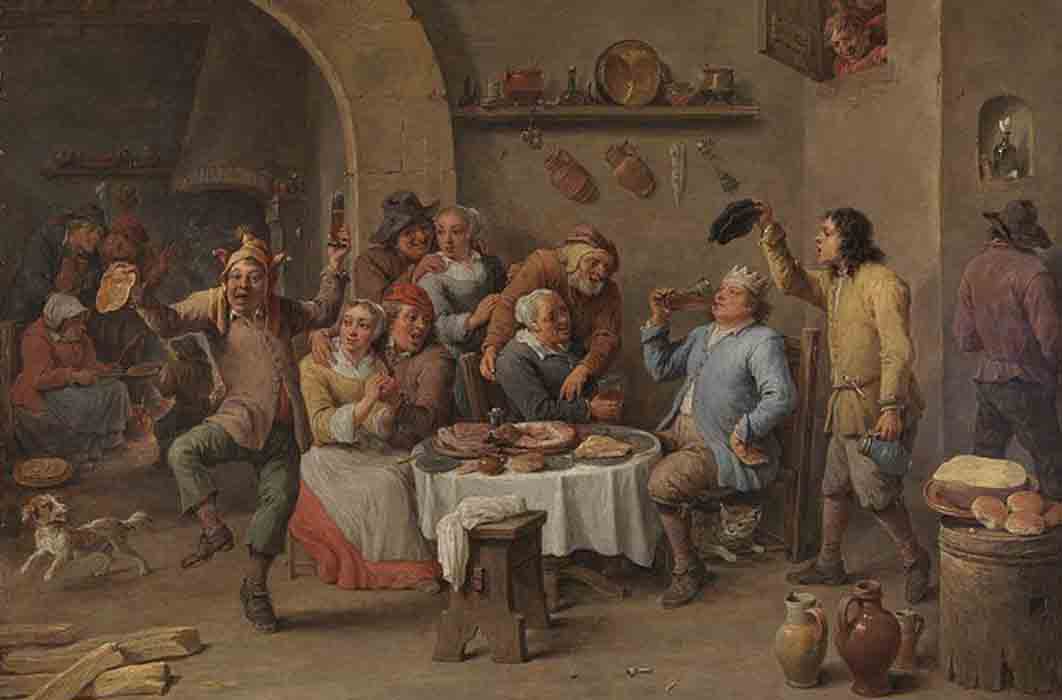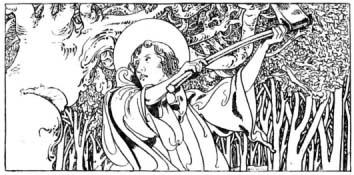
Traditions of Twelfth Night: Dismantling the Christmas Tree
Counting from December 25, using the Julian calendar, Twelfth Night – January 6 – takes place on the last night of the ‘Twelve Days of Christmas’, marking the coming of the Epiphany, celebrating the revelation (theophany) of God manifesting as Jesus Christ. Superstition also has it that this is traditionally the date to dismantle the Christmas tree and its decorations, but where did the tradition of decorating a tree to celebrate the birth of Jesus, originate in the first place?

St Boniface cutting down the Oak dedicated to Thor by Emil Doepler (1905) (Public Domain)
St Boniface And Donar’s Oak
Christmas is characterized by a fir tree overloaded with decorations, glittering colored balls, iridescent strings of silver or gold tinsel simulating an improbable snowfall. Where did the idea of cheering up the Christmas season with a fir tree, under which to place gifts for loved ones, spring from? Against the backdrop of eighth-century Germany, in the district of Geismar, a monk and missionary born in Britain, called Winfrid, was engrossed in preaching the Nativity to a tribe of Germanic pagans. The monk - later to become St Boniface - tried to convince the pagans that the oak tree dedicated to Donar or Thor was not at all sacred and inviolable, and to prove his point, he took an axe and cut one down. The poor tree was felled and crushed all vegetation in its path as it came crashing down, except for a small fir tree, that remained ‘the last man standing’.

A depiction of Boniface destroying Thor's oak from The Little Lives of the Saints (1904), illustrated by Charles Robinson. (Public Domain)
Quick to turn this unexpected event to his advantage, the good Boniface emphasized that the fir tree was to become the tree consecrated to the Baby Jesus and that the festivity commemorating the birth of the Savior should always be remembered by means of a small fir tree placed in the abodes of the faithful followers of Christ. Centuries later, in 1561, a special forestry decree issued in the town of Ammerschweier in Alsace laid down the maximum size of the fir tree, while decorations consisting of paper roses, apples, wafers, sweets and small gifts appeared on Christmas trees.
Martin Luther’s Christmas Tree Candles
Legend has it that it was Martin Luther, the great Protestant reformer of the 16th century, who added candles to the Christmas tree. The idea came to him as he walked to his home one cold winter's night and noticed the beauty of the starry sky glimpsed through the branches of a tree. In order to recreate the image that had struck him on his way home and relive those moments, he fixed small lit candles to the branches of his Christmas tree. As early as the 18th century, the tradition of the Tannenbaum or Christbaum, or Christ tree, became widespread in Germany and from there it quickly spread throughout Western Europe.

Steel engraving of Martin Luther’s Christmas Tree, from Sartain’s Magazine (circa 1860) (Public Domain)




